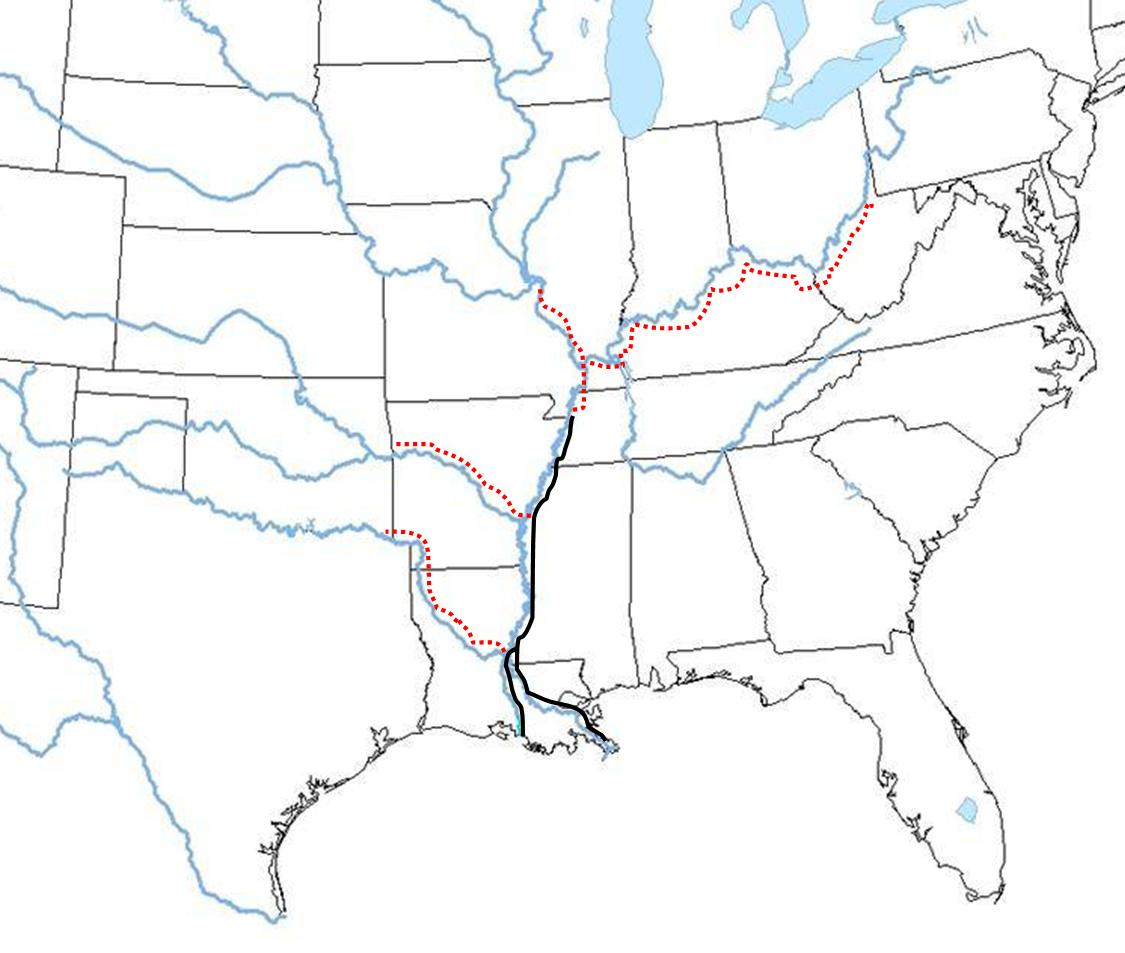Has anyone kept Ohio River Prawns?
#1
 Guest_Newt_*
Guest_Newt_*
Posted 21 February 2008 - 05:56 PM
Has anyone here kept them? How easy are they to maintain?
Are they compatible with moderate-sized fish (Lepomis, Fundulus, Notemigonus, etc.)? I fear the answer is no, but I thought I would ask anyhow.
Does anyone know of a source for them?
#2
 Guest_Gambusia_*
Guest_Gambusia_*
#3
 Guest_farmertodd_*
Guest_farmertodd_*
Posted 21 February 2008 - 09:19 PM
I would contact Ray Bauer:
http://www.ucs.louis...rtb6933/shrimp/
He was one of the speakers at the Missouri Convention is just an all around great guy. It seems to me that he would be pickled to talk to someone interested in these shrimp. His website might focus on Caribbean shrimps, but don't let that distract you. He is THE shrimp man
Todd
#4
 Guest_Newt_*
Guest_Newt_*
Posted 21 February 2008 - 09:21 PM
#5
 Guest_itsme_*
Guest_itsme_*
Posted 22 February 2008 - 01:28 AM
#6
 Guest_farmertodd_*
Guest_farmertodd_*
Posted 22 February 2008 - 08:21 AM
Todd
#7
 Guest_Newt_*
Guest_Newt_*
Posted 22 February 2008 - 11:11 AM
You're right, Itsme, I got the specific epithet mixed up (I oughtta look before I type). But the genus is Macrobrachium ("big arm") rather than Macrobranchium ("big gill").
It's sounding like they would probably not be best suited for this community tank. I don't want to go to all the trouble of getting these things just to have them start murdering my fish and crawdads or being murdered by them, and if they prove incompatible I have nowhere else to put them. I sent an e-mail to Dr. Bauer, so I'll see what he has to say (I misspelled ohione in that e-mail too; how embarrassing!), but the outlook seems bleak. Oh well, it was just a stray idea anyways.
We still get occasional eels in the middle parts of the Cumberland and Tennessee, so anything's possible, I suppose. But it does seem like it would be pretty hard for shrimp to make much headway in the Mississippi's main channel.
#8
 Guest_itsme_*
Guest_itsme_*
Posted 22 February 2008 - 01:47 PM
You're right, Itsme, I got the specific epithet mixed up (I oughtta look before I type). But the genus is Macrobrachium ("big arm") rather than Macrobranchium ("big gill").
Oh, thanks! I've been misspelling that for a long time.
#9
 Guest_itsme_*
Guest_itsme_*
Posted 22 February 2008 - 05:21 PM
Hey Newt,
I would contact Ray Bauer:
http://www.ucs.louis...rtb6933/shrimp/
He was one of the speakers at the Missouri Convention is just an all around great guy. It seems to me that he would be pickled to talk to someone interested in these shrimp. His website might focus on Caribbean shrimps, but don't let that distract you. He is THE shrimp man
Todd
Oh, I'm connecting the dots, finally
Mark
#10
 Guest_Canadiancray_*
Guest_Canadiancray_*
Posted 05 April 2008 - 11:03 PM
#11
 Guest_Irate Mormon_*
Guest_Irate Mormon_*
Posted 06 April 2008 - 11:07 PM
I would contact Ray Bauer:
Wasn't that the kid who got hit by a train in the movie "Stand By Me" ? Based on the Steven King novella "The Body".
Sorry for the derail. Talk amongst yourselves.
#12
 Guest_NKJohnson_*
Guest_NKJohnson_*
Posted 06 April 2008 - 11:18 PM
#13
 Guest_Ouassous_*
Guest_Ouassous_*
Posted 17 August 2008 - 02:28 PM
#14
 Guest_Newt_*
Guest_Newt_*
Posted 18 August 2008 - 09:18 AM
The only Macrobrachium I see around here are the Asian species that some of the local farmers raise in their ponds.
#15
 Guest_centrarchid_*
Guest_centrarchid_*
Posted 18 August 2008 - 02:46 PM
I have not, and I am not aware of anyone who has caught them in Tennessee. I suppose they must be in our section of the Mississippi mainstem, but I doubt they make it into the Tennessee and Cumberland systems past the first dams.
The only Macrobrachium I see around here are the Asian species that some of the local farmers raise in their ponds.
I have seen them in the lower Ohio River upstream of the the Cumberland Tennessee confluences.
In housing them, I think they do better without structure.
#16
 Guest_Ouassous_*
Guest_Ouassous_*
Posted 18 August 2008 - 10:59 PM
This is the map of M. ohione distribution in the Mississippi River system from Dr. Bauer's river shrimp research page:I have seen them in the lower Ohio River upstream of the the Cumberland Tennessee confluences.

Black line = present day distribution; red dots = pre-1930's
Some more insight on distribution from Missouri Conservationist Online:
Once common in the Mississippi River below St. Louis, where commercial fisheries once existed near Chester and Cairo, Ill., Ohio shrimp were thought to be extirpated (locally extinct) in the Mississippi River bordering Missouri and Illinois since 1962. In 1991, however , Conservation Department biologists and a student from Southern Illinois University rediscovered them.
Edited by Ouassous, 18 August 2008 - 11:01 PM.
#17
 Guest_centrarchid_*
Guest_centrarchid_*
Posted 19 August 2008 - 06:44 AM
Poly, W.J., and J.E. Wetzel. 2002. The Ohio shrimp, Macrobrachium ohione (Palaemonidae), in the Ohio River of Illinois. Transactions of the Illinois State Academy of Science 95(1):65-66.
Subsequent visits show Ohio shrimp occuring futher up stream near Indiana border. Maybe further but collection gear / efforts targeted crayfish.
Edited by centrarchid, 19 August 2008 - 06:44 AM.
0 user(s) are reading this topic
0 members, 0 guests, 0 anonymous users







